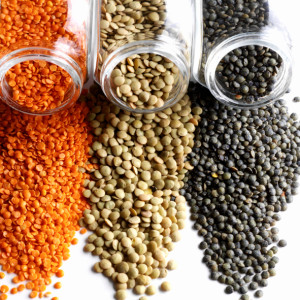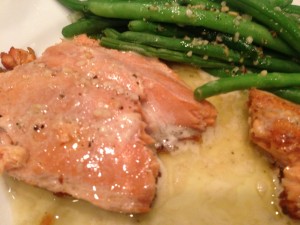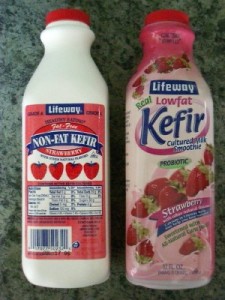Why You Should Try The Mediterranean Diet
In a large study of over 22,000 Greek participants research showed huge benefits to those who followed the Mediterranean diet. In fact, they have come up with a score for this diet, and the more you follow it there is a large reduction in risk. For each of the nine categories there is a score of 0 or 1. If you improve your lifestyle score by just two points, say from 5 to 7, you have a 25% reduction in death from all causes. (NEJM 348;26: 2599-2608. Adherence to a Mediterranean Diet and Survival in a Greek Population, Trichopoulou, et al.)
Nine Categories
1. Vegetables
To add a point to the score more than 11 ounces for males and 9 ounces for females. This is 2-3 cups per day. Adding vegetables to meals and snacks is a great place to start. So how many is 2-3 cups? Well, it is about 12 ounces. A large carrot is about four ounces.
2. Legumes

Peas, peanuts, snap beans, bean pods, okra, and my favorite lentils are powerful and often overlooked foods. Choosing as a side dish or main dish are encouraged. Eating a peanut butter sandwich for lunch is an easy way to add points and reduce heart disease. For men 2.1 ounces and for women 1.75 ounces. What is interesting is the study that found men who at legumes four times or more per week reduced their risk of heart disease by 22% (Archives 1001 151: 2573-2578).
3. Fruits and Nuts
 For men about 9 ounces and for women about 8 ounces which is 1-2 servings per day. One medium apple is six ounces, then add some nuts as a snack (two ounces). Best to consume whole fruit and not fruit juice. Nuts are quality snacks, even salted nuts better than potato chips or crackers.
For men about 9 ounces and for women about 8 ounces which is 1-2 servings per day. One medium apple is six ounces, then add some nuts as a snack (two ounces). Best to consume whole fruit and not fruit juice. Nuts are quality snacks, even salted nuts better than potato chips or crackers.
4. Whole Grains
Did you know that corn is a whole grain? Be careful with packages, because there is no standard for “whole grain” in the United States, but there are in other countries. Examples of whole grains include corn, popcorn, wild rice, baked corn tortillas, and quinoa. To earn one point is about 2 slices of whole wheat bread per day.
5. Fish

Two servings per week – which the American Heart Association recommends. Salmon, Trout, Mackerel, halibut, tuna, but also shrimp, clams, crabs.
6. Oils
It is the ratio of unsaturated to saturated 1:1.6 with higher levels of unsaturated adds a point. Olive oil shines here. The Mediterranean Diet isn’t a “low fat” diet, but it is a diet that is lower in saturated fat than others.
7. Dairy

Most dairy should be fermented like yogurts and cheeses. Less than 7 ounces a day. Think of Kefir, whole cheeses. Not sweetened yogurt – instead use plain and add your own fruit (netting a couple of points).
8. Meats
Red meat should be lean and consuming less than 4 ounces per day on average is optimum. One serving per day. Avoiding processed meats – except Iberico Ham, is ideal ) 55% of the fat is monounsaturated. Iberico Ham is delicious.
9. Alcohol
 A part of the diet and is consumed at meals. It is some, but not much. 1-2 drinks per day is ok, and this is not to be consumed at once as binge drinking.
A part of the diet and is consumed at meals. It is some, but not much. 1-2 drinks per day is ok, and this is not to be consumed at once as binge drinking.
Your Brain and The Mediterranean Diet
In dementia of all types there is brain loss, be that Alzheimer’s or vascular dementia (like my mother suffers from), or even the aging brain shows some loss of brain tissue. Imagine if there was less shrinkage of the brain? A study that followed Scottish people born in 1936 found those who more closely followed the Mediterranean Diet had less brain loss. (Mediterranean-type diet and brain structural change from 73 to 76 years in a Scottish cohort). The study didn’t find one particular food to do this, but much like the Greek study (above) but seem to replicate the point system above.
History of The Mediterranean Diet – Made in America

In January 1961, Ancel Keys was on Time magazine’s cover, and the article talked about diet and heart health, something new for the American public and most doctors. Prior to Keys, people considered heart disease to be simply a disease of aging, not a preventable disease of lifestyle and diet. Dr. Keys, a Ph.D. in physiology, was also known as the inventor of the wartime K-rations (K is for Keys). When my father, a World War II veteran, heard that the same person who developed K-rations invented a diet, his response was, “Well, that’s a diet I won’t have to worry about trying.”
Dr. Keys is the “founder” of the Mediterranean diet. He said, “My concern about diet as a public health problem began in the early 1950s in Naples, where we observed very low incidences of coronary heart disease associated with what we later came to call the ‘good Mediterranean diet.’ The heart of this diet is mainly vegetarian, and differs from American and northern European diets in that it is much lower in meat and dairy products, and uses fruit for dessert.
Today, the healthy Mediterranean diet is changing and coronary heart disease is no longer confined to medical textbooks. Our challenge is to persuade children to tell their parents to eat as Mediterraneans do.
While in Italy, he noticed that the high consumption of fat in olive oil and a low incidence of heart disease. He came to the conclusion that not all fats were the same, and olive oil falls into what he described as a “good fat” category. Keys died at age one hundred, touting the benefits of the Mediterranean diet while living in Naples, Italy.
Keyes described the diet as, “Homemade minestrone, pasta of all varieties, with tomato sauce and a sprinkling of Parmesan, only occasionally enriched with a few pieces of meat or served with a small fish of the place; beans and macaroni; so much bread, never removed from the oven more than a few hours before being eaten, and nothing with which spread it; lots of fresh vegetables sprinkled with olive oil, a small portion of meat or fish maybe a couple of times a week, and always fresh fruit for dessert.”
Many think the Mediterranean diet is the foods that modern Italians, Greeks, or Spaniards eat.Today’s Mediterranean diet is due to the efforts of K. Dun Gifford, who founded the non-profit corporation called Oldways after becoming interested in “traditional” foods. After organizing a symposium, in 1993 he developed the Mediterranean Diet Pyramid with the Harvard School of Public Health, where olive oil was the main fat, along with some wine drinking and minimal red meat.
At the base of the Mediterranean food pyramid, and the basis of the diet, are potatoes, breads, grains, beans, nuts, seeds, rice, couscous, and polenta (which, if you are from the southern United States, would mean grits). When they say whole grains, that is not defined in the United States. Many food companies in the US want to slap the “made with whole grain” label on the food you buy, so it is important to read the label on the bread. Ezekiel bread is an example of a good whole grain. One whole grain you can incorporate – popcorn.

Daily consumption would include fruits, beans, legumes, nuts, and vegetables, along with olive oil as the main fat, and some cheese and yogurt. I suspect most yogurt currently sold in the United States labeled, as Greek yogurt, which has more sugar than ice cream, would not qualify in this diet. This is why we encourage people to buy plain yogurt and mix in your own fruit. In addition there would be weekly consumption of fish, poultry, and eggs, with red meat coming as a protein less than once a week.
A sample diet from the pyramid is below:
Breakfast
6 oz. Greek yogurt topped with ½ cup strawberries and 1 tsp. honey
1 slice whole-grain toast with half mashed avocado
Lunch
1 whole-grain pita with 2 tbsp. hummus and stuffed with 1 cup fresh greens and 2 slices tomatoes
1 cup minestrone soup
1 medium orange
Water with 1 lemon wedge
Snack
1/8 cup sliced almonds
1/8-cup peanuts
Dinner
3 oz. salmon topped with 1 tsp. tarragon and 1 tsp. mustard over
½ cup couscous, ½ cup zucchini, and 4 spears asparagus
Salad:
½ cup arugula
½ cup baby spinach
1 tbsp. shaved Parmesan cheese
1 tbsp. vinaigrette dressing
5 oz. red wine (optional)
Dessert
Small bunch grapes
½ cup lemon sorbet
This diet would be about 1,500 calories, with 29% coming from fat, 5% from saturated fat, and 50% from carbohydrates; 32 grams of fiber, 1,400 mg of sodium, 3,350 of potassium, a bit low in calcium for people over fifty at 418 grams, and 2.8 of vitamin B12.
It has no room for sugary drinks, no soda, no processed foods, and conforms to most common beliefs about a healthy diet.
I object to the small wine pour—only five ounces? That is homeopathy applied to wine. In Italy a five-ounce pour is called a tease.
Cardiovascular Health: Hype, Reality, and Statistics
Imagine following a diet like this and having a 33 PERCENT decreased risk of developing heart disease in five years! Or, if you have had a heart attack, following this as a way of living and decreasing your risk of sudden cardiac death by as much as 70 per cent in four years.
Daily, there are reports touting the benefits of the Mediterranean diet with cardiovascular health. Some studies show a decrease in markers for heart disease; such as the decrease in LDL (the so-called bad cholesterol) and increase in HDL (which is the “good cholesterol”). The Trichopoulou study showed that increasing a score in the diet (see above) leads to a decrease in mortality for all causes, and 33% reduction in deaths from heart disease.
Extra virgin olive oil is one of the great gifts from the Mediterranean to the world. The most rigorous standards for what is labeled Extra Virgin Olive Oil come from the United States. So if you want great olive oil, buy American. Make sure the olive oil has a “Use by” date on it, and it comes in a darker bottle. Olive oil is good for about two years after bottling. No need to buy the expensive “made in Italy” olive oil, when you can get fresher, better, tastier olive oil here. Ironic – the Mediterranean diet is made in America, based on a lot of olive oil, and the best olive oil is made in America.
Weight Loss and the Mediterranean Diet
The diet gives you 1,500 kcal per day. It really was not a diet that was made for weight loss, and yet any reduction of caloric intake will result in some weight loss for those who are over nourished. It reigns in calories from processed foods, and decreases overall caloric intake while not restricting any particular group. In the long-term, maintaining that weight loss is proportional to adopting the diet, and the caloric intake as a lifestyle.
The Healthy Parts of the Mediterranean Diet
This is another diet that takes people to a wide variety of fruits and vegetables. Some would comment that this is another diet for upper middle class consumers who can shop in well-stocked supermarkets and don’t have to worry about the food deserts that exist in the United States or the world.
The base of the diet pyramid being grains means that it is in strict opposition to the Paleolithic diet. But where both Paleolithic and Mediterranean diets agree is lots of fruits and vegetables.
Shortfalls in the Mediterranean Diet
Some have criticized the diet for falling short of sources of potassium, which is odd considering the major dietary sources of potassium are beans, leafy green vegetables, potatoes, yogurt, and salmon. In addition the leafy green vegetables, as the Paleolithic dieters will point out, provide a better bio-available form of calcium, and you do not need as much calcium because of that. Meaning, if you eat those four to six servings a day (and that is a lot of vegetables) there will be no reduction in calcium, even though the total calcium is less from those plants. That is, when the math about bioavailability is done you will have plenty of calcium in those diets. Sometimes nutritionists fall in love with their slide rulers (you have to be old to appreciate that), and neglect to add the bioavailability of the foods into their equations. The more conspiratorially minded people will note that the dairy industry has the ear of many nutritionists and emphasizes that dairy is, and should be, the primary source of calcium. Calcium is noted to be a “nutrient of concern,” meaning Americans don’t get enough of it. Still, adding the fermented dairy products, like cheese, yogurt, and Kefir provide great sources of calcium.
Diabetes and the Mediterranean Diet
Studies have shown there is a reduction in diabetic markers, hemoglobin A1C while on the Mediterranean diet, so it is an appropriate diet for those who have diabetes. The difficulty is that with this diet there is an emphasis on grains, including pasta and breads, that can have a devastating effect on diabetes if they are highly milled. Use of whole grain pasta, whole grain breads provide clear benefit.
When in Sardinia, off the west coast of Italy, I asked for a bit of pasta with marinara sauce. What came out was a red tomato sauce, with amazing tomato flavor, but there were these chunks in it. The chunks were fish, langoustines, clams, and mussels—and then it hit me, the true meaning of a sauce of the sea (“marinara” – from marine) was a sauce for fish. For most of America it is a sauce you buy off the shelf that has some tomatoes and salt and pepper in it. The pasta was hand made, that day, not something dry that would survive the next nuclear attack.
Many of us in culinary medicine love this diet, such as my fellow doctor-chef, John La Puma. John loves great wines, his prescription pad, like mine, are filled with recipes. Or, the founder of the Goldring Center for Culinary Medicine, Dr. Harlan.
